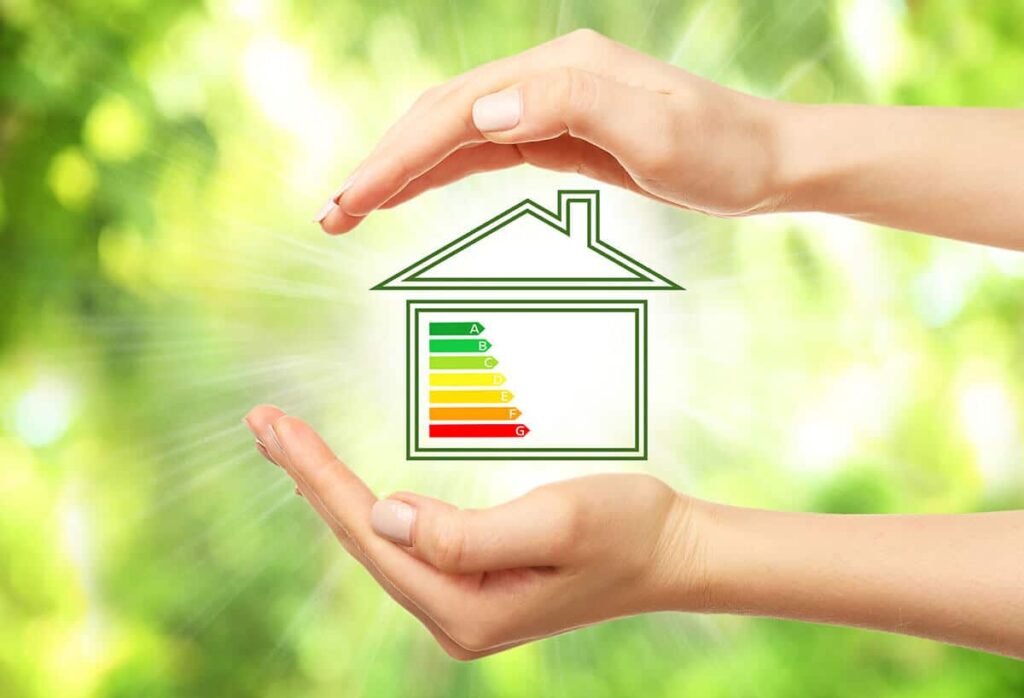Looking for ways to stay “green” during your next home improvement project? Perfect! The good news is there are lots of ways you can not only improve your home’s look, but also it’s energy efficiency which can save you money for years to come. Apply for a loan for home improvement today!
First – Discover the Energy Efficiency of Your Home
A good start to an Eco-Friendly home improvement project is determining your home’s annual energy use. You can visit the EPA’s website and use their Home Energy Yardstick. This tool provides a simple assessment of your home’s annual energy use compared to similar homes. By answering a few basic questions about your home, you can get:
- Your home’s Home Energy Yardstick score (on a scale of 1 to 10);
- Insights into how much of your home’s energy use is related to heating and cooling versus other everyday use like appliances, lighting, and hot water;
- Links to guidance from ENERGY STAR on how to increase your home’s score, improve comfort, and lower utility bills.
If your home scores lower than a five on the Home Energy Yardstick assessment, this means that your energy use is above average and that you are probably paying more than you need to on your energy bills.
Home Insulation
Insulating your home will add to your comfort, create a healthier home environment, reduce your energy bills, and have a positive environmental impact. There are a number of Energy Star rated insulation products on the market too! Overall, insulation will keep your home cooler in the summer and warmer in the winter. This will reduce the amount of heating and cooling appliances you need to use to keep your home comfortable. In order to maximize the benefits of installing insulation in your home, make sure to insulate your attic to recommended levels, including the attic door or hatch cover, and to provide the recommended level of insulation under the floor, above unheated spaces, around walls in a heated basement or unventilated crawl space, and on the edges of slabs-on-grade. When remodeling or residing your house, consider using the levels recommended for new construction in your existing walls.
Add a Programmable Thermostat
Another way to cut energy costs is with a programmable thermostat. If you’re looking to cut back expenses, you will usually see return on investment from your programmable thermostat within one year. When used properly, this device can save residents about $180 annually. In order to maximize your energy savings using your programmable thermostat, during eight hour periods when your home is empty or when you are sleeping, dial back your thermostat a few degrees. This alone will cut your energy bill by 10-15%! In addition, take advantage of your programmable thermostat’s vacation setting if you will be away for a few days. Your thermostat will automatically decrease its usage and can return to normal settings when you return with the push of a button.
New Energy Efficient Windows
Replacing old windows with Energy Star certified windows lowers household energy bills by 7-15%. Their improved frame materials reduce heat transfer and insulate better, and they have special glass coatings that keep heat inside in the winter and outside in the summer. Reducing your energy consumption reduces greenhouse gas emissions from power plants and shrinks your house’s carbon footprint. Shopping for new windows, doors, and skylights can be a confusing process. Energy Star makes it simple! All Energy Star qualified products must display the Energy Star label. Check the label to make sure the product you are considering qualifies in your area.
Replace old equipment with energy efficient heating, ventilating, and air conditioning units
Replacing an outdated HVAC system with a more energy-efficient one can lower your monthly energy bills. If your heat pump or air conditioner is more than 10 years old, this option might be right for you. But before considering this project, it’s essential to make sure your home is as well-sealed and insulated as possible. Again, look for Energy Star models, which are about 10-15% more efficient than standard models. Replacing an old, inefficient system with an Energy Star-rated model can save you about $200 per year on your utility bill, plus make your house more comfortable by helping to maintain a uniform temperature throughout your home.













